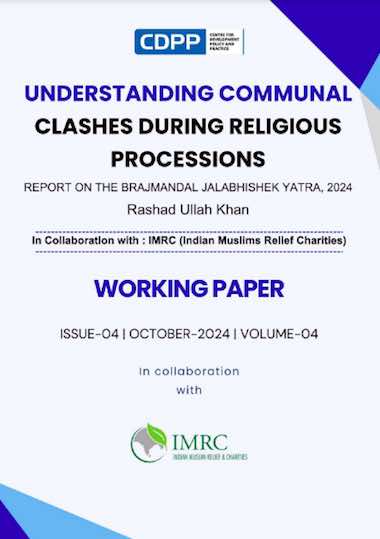
The pluralistic and secular characteristic of India has been facing its most intense challenge as of late—with communal forces attempting to create an environment where violence could erupt at any given time. The process of communalisation that has been taking place during the reign of the Bharatiya Janata Party (BJP) (“Religious Freedom Worsened,” 2022) has increased fear and insecurity among the minority communities. One of the tools being utilised to further worsen harmony and peace is the use of religious processions. Armed religious processions being carried out by militant Hindutva groups such as the Bajrang Dal and Vishwa Hindu Parishad (VHP) have become more and more frequent in the past few years, leaving behind a trail of violence and destruction.
One such procession which created quite a stir was the Brajmandal Jalabhishek Yatra that was carried out in Nuh, Haryana on July 31, 2023. As the procession was being carried out in Nuh, communal clashes broke out between the members of the procession and the Muslim residents of that area. The harrowing aspect of the communal clash was that the violence boiled over and made its way to Gurugram (Jain, 2023), a prosperous business hub, right next to India’s capital Delhi. All of this took place one month before India hosted the G20 summit in Delhi (Farooqui, 2023). Such is the sociopolitical climate of India and callous attitude of the administration, which enables such communal clashes to take place.
In 2024, it was announced that Brajmandal Jalabhishek Yatra would be organised again. However, the 2024 iteration of the religious procession went through Nuh peacefully and the procession concluded without a single incident of communal violence. This report, written by the Centre for Development Policy and Practice (CDPP), aims to inquire into why no violence took place when the same procession was organised in 2024. The report aims to answer questions such as, what were the differences in the attitudes and manner in which the administration and the police operated, what elements within the religious procession were present in 2023 and not in 2024, and what was the ground level context due to which communal tensions were high. The answers to these questions and other related questions will enable us to understand how a religious procession, a ritual act which is supposed to be spiritual in nature, instead becomes a preliminary act of instigation which leads to communal clashes.
